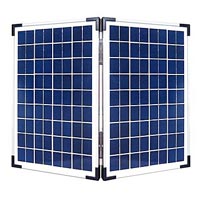
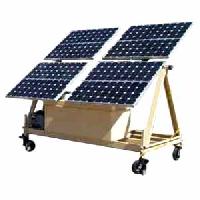

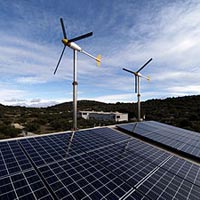
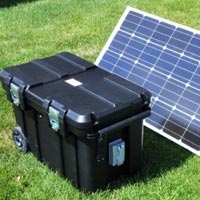
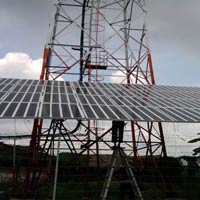

Building Integrated Photovoltaics Solar Glass System
Get Price Quote
10 Piece (MOQ)
Building-Integrated Photovoltaics. It refers to photovoltaic materials that are integrated directly into the building envelope—such as roofs, façades, windows, or walls—replacing conventional construction materials. Unlike traditional solar panels that are added onto a building, BIPV systems are designed to serve as both building materials and energy generators. Key Features of BIPV: Dual Functionality: They provide the structural function of a building component (e.g., roofing, cladding) while also generating renewable energy. Aesthetics: BIPV systems blend seamlessly into the architecture of the building, offering a more visually appealing alternative to traditional solar installations. Energy Efficiency: By generating electricity on-site, BIPV helps reduce reliance on external power sources, lowering energy costs and carbon emissions. Customizability: BIPV materials can be tailored in terms of size, shape, color, and transparency to suit specific design needs.Common Types of BIPV Products: Photovoltaic Roof Tiles/Shingles: Installed in place of conventional roofing materials. Photovoltaic Glass: Used in windows, skylights, or facades, often semi-transparent. Facade Panels: Integrated into walls as part of the exterior cladding. Solar Canopies: Used for walkways, awnings, or carports. Advantages of BIPV: Reduces material and labor costs by combining power generation with construction. Enhances building aesthetics compared to traditional solar panels. Supports sustainability goals and compliance with green building standards. Applications: BIPV is used in residential, commercial, and industrial buildings. It's especially popular in projects aiming for net-zero energy or LEED certification.If you’re considering BIPV for a project, it’s worth consulting with architects and energy specialists to determine the best solution for your specific building design and energy goals.

Photovoltaic Lighting System
Get Price Quote
Solar photovoltaic system works on the principle of converting sunlight energy into electric energy. This is done by using photovoltaic silicon solar cells. When light energy strikes on solar cells, energy is transmitted by the movement of electrons. The flow of electrons results in a potential difference. This potential difference is stored in rechargeable batteries and can be used whenever needed.
Best Deals from Photovoltaic System
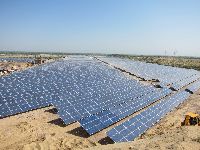
solar pv power generation
Get Price Quote
Sun Energy can be harnessed in either form of photovoltaic as well as solar thermal energy generation. Photovoltaic Power generation using photovoltaic phenomenon can be applied for following type of power plant: > MW scale Grid Connected Solar Power Plant > Rooftop Grid Connected Solar Power Plant > Net-metering rooftop solar power plant > Off grid solar power plant > Rural Mini grid solar power plant

Solar Photovoltaic System
Get Price Quote
Solar Photovoltaic System, solar thermal products

Solar Photovoltaic System
Get Price Quote
Solar Photovoltaic System, solar foldable solar panel

Solar Photovoltaic Systems
Get Price Quote
Maharishi solar technology pvt ltd is one of the leading manufacturers of solar photovoltaic systems in india.
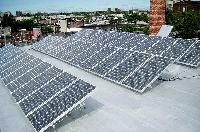
solar photovoltaic rooftop system
Get Price Quote
solar photovoltaic rooftop system, Solar Water Heating System

Solar Photovoltaic System
Get Price Quote
Solar Photovoltaic System, Solar Lantern

Integrated Photovoltaics System
Get Price Quote
Building Integrated Photovoltaics System (BIPV) is the integration of Photovoltaics (PV) into the building envelope. BIPV system is designed to provide savings in materials & electricity costs, reduce use of fossil fuels, emission of ozone depleting gases, and add architectural interest to the building. Building Integrated Photovoltaics System often has lower cost than PV systems requiring separate, dedicated, mounting systems. Building Integrated Photovoltaics System is a compilation of beneficial components like thin-film or crystalline, transparent, semi-transparent, or opaque, a charge controller, a power storage system, power conversion equipment, backup power supplies and appropriate support and mounting hardware, wiring, and safety disconnects. For assorting the wonderful features in one system, we are established ourselves in the markets as the best Manufacturer and Exporter. Benefits : The benefits can be identified and evaluated based on the direct economic impacts, indirect economic impacts and qualitative values. Direct economic impact A BIPV installation can furnish a direct economic incentive to the owner by the value of the electricity produced. Other economic impacts include possible fiscal or subsidy advantages or benefits. Indirect economic impact A BIPV Installation can indirectly influence also the budget. For example a reduction of environmental emissions associated to the savings from the lowering the use of fossil fuel can be positively valued in the case of the introduction of a CO2 emissions tax. This could have a hidden economic effect not included in the initial analysis of the investment.The BIPV Installation adopted by multinationals can be associated to a positive and sensitive image to the environment; this could have a positive influence on the public perception and a possible indirect economic impact. Finally, many consumers might appreciate the feeling of independence derived from possessing a BIPV Installation that covers his/her own energetic requirement. Qualitative values The following, deals with subjective benefits and therefore difficult to quantify. It gathers all the benefits that cannot be directly associated to an economic profit, but that increase the benefit of the BIPV installations. Energetic values The way added value can be identified is by the energetic values (emergency power supply, energy for isolated houses of the electric grid, reduction of transmission and distribution losses, improvement of grid reliability). Environmental values (contribution to green house effect reduction and nuclear waste), Architectural values (multi-functionality, use of innovative construction materials, transparency, fire protection, electromagnetic wave protection, thermal isolation, waterproofing, maintenance reduction) as well as socio-economic values (development of new local industries with the relative products and markets, reduction of fuel transportation cost, collaboration and long term aid to developing countries). Applications : Solar cells can be incorporated into the facade of a building, complementing or replacing traditional view or spandrel glass. Often, these installations are vertical, reducing access to available solar resources, but the large surface area of buildings can help compensates for the reduced powerPhotovoltaics may be incorporated into awnings and saw-tooth designs on a building facade. These increase access to direct sunlight whiles providing additional architectural benefits such as passive shadingThe use of PV in roofing systems can provide a direct replacement for batten and seam metal roofing and traditional 3-tab asphalt shinglesUsing PV for skylight systems can be both an economical use of PV and an exciting design feature. Click Here To View More Detail

Solar Photovoltaic Systems
Get Price Quote
Solar Photovoltaic Systems, solar photo voltaic systems

Solar Photovoltaic System
Get Price Quote
Solar Photovoltaic System, energy conservation products, Solar Air Dryer

Solar Photovolt
Get Price Quote
Solar Photovolt, Solar Lighting

Solar Photovoltaic System for Integrated Building
Get Price Quote
Solar Photovoltaic System for Integrated Building, Energy Saving Electric Wire

pv systems
Get Price Quote
pv systems, Solar Lanterns, Solar Lighting, Solar Home Lighting Systems

photovoltaic system
Get Price Quote
photovoltaic system

Solar Rooftop photovoltaic system
Get Price Quote
Solar Rooftop photovoltaic system, Solar Heaters